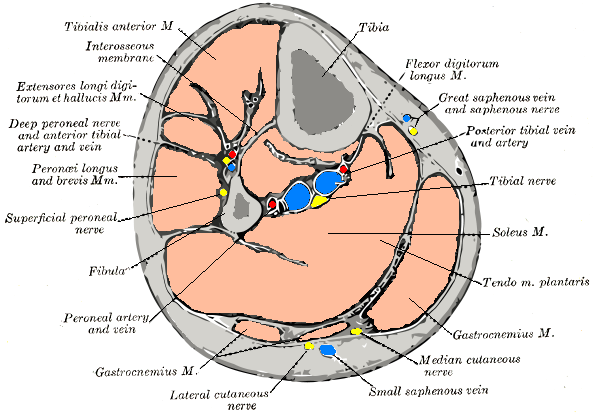Peroneus brevis
Overview
The peroneus brevis muscle (or fibularis brevis) lies under cover of the peroneus longus, and is a shorter and smaller muscle.
Origin and insertion
It arises from the lower two-thirds of the lateral surface of the body of the fibula; medial to the Peronæus longus; and from the intermuscular septa separating it from the adjacent muscles on the front and back of the leg.
The fibers pass vertically downward, and end in a tendon which runs behind the lateral malleolus along with but in front of that of the preceding muscle, the two tendons being enclosed in the same compartment, and lubricated by a common mucous sheath.
It then runs forward on the lateral side of the calcaneus, above the trochlear process and the tendon of the Peronæus longus, and is inserted into the tuberosity at the base of the fifth metatarsal bone, on its lateral side.
Terminology
The terms "Peroneal" (i.e., Artery, Retinaculum) and "Peroneus" (i.e., Longus and Brevis) are derived from the Greek word Perone (pronounced Pair-uh-knee) meaning pin of a brooch or a buckle. In medical terminology, both terms refer to being of or relating to the fibula or to the outer portion of the leg.
Additional images
-
Bones of the right leg. Anterior surface.
-
Bones of the right foot. Dorsal surface.
-
Muscles of the front of the leg.
-
Cross-section through middle of leg.
-
The popliteal, posterior tibial, and peroneal arteries.
-
Back of left lower extremity.

